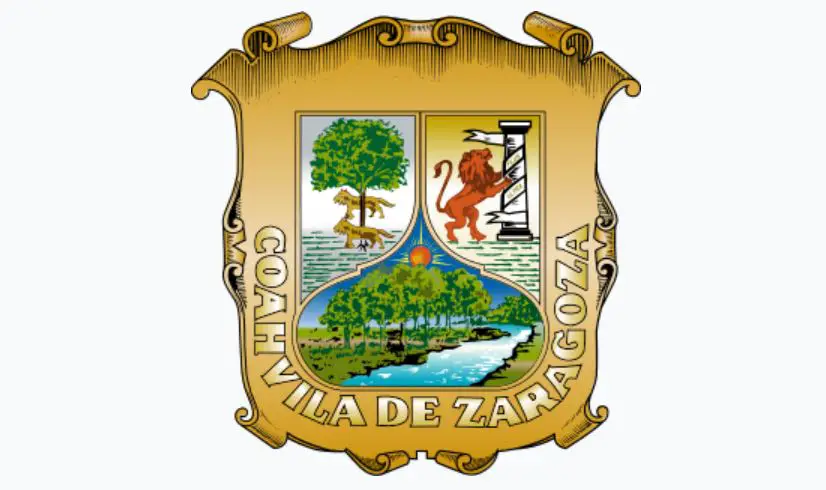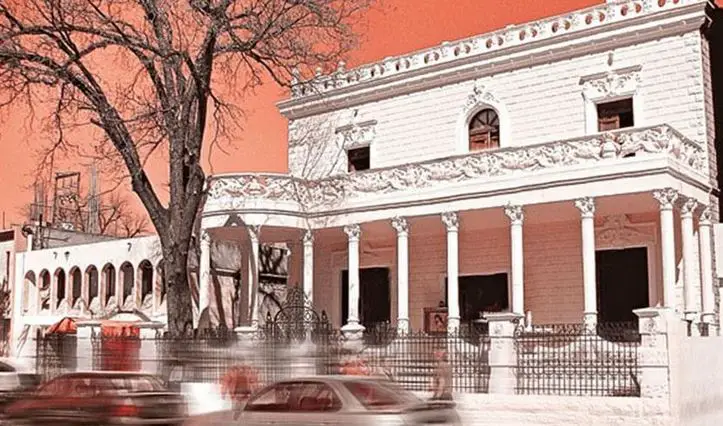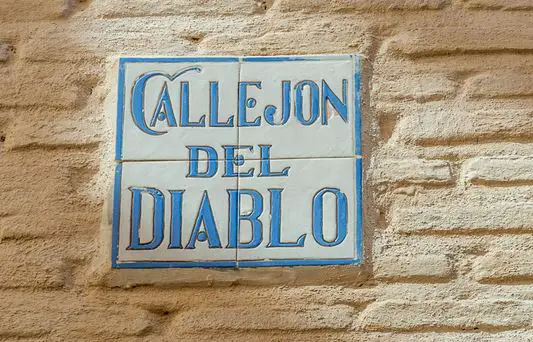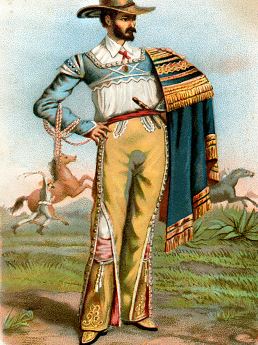Podcast: Play in new window | Download
Subscribe: Apple Podcasts | RSS
 The third-largest state in Mexico, Coahuila borders the Mexican states of Nuevo León to the east, Zacatecas to the south, and Durango and Chihuahua to the west. To the north, Coahuila accounts for a 318 mile stretch of the US-Mexican border, adjacent to the American state of Texas along the course of the Rio Grande, known in Mexico as the Río Bravo del Norte. Coahuila is home to almost 3.2 million people and many legends.
The third-largest state in Mexico, Coahuila borders the Mexican states of Nuevo León to the east, Zacatecas to the south, and Durango and Chihuahua to the west. To the north, Coahuila accounts for a 318 mile stretch of the US-Mexican border, adjacent to the American state of Texas along the course of the Rio Grande, known in Mexico as the Río Bravo del Norte. Coahuila is home to almost 3.2 million people and many legends.
- The Mysterious Casa de las Canicas
Near the corner of Victoria and Xicoténcatl streets in the capital city of Saltillo, an architectural marvel dating to the 1930s still stands. This magnificent house is nicknamed by locals “La Casa de las Canicas,” which translates to “The House of the Marbles” in English. Why the name? The house’s last inhabitants into the early 1960s were two sisters whose father built the house. The sisters were short, very fat, fair-haired, and light skinned. The neighbors of these two women nicknamed the sisters “Las Canicas,” or “The Marbles” because of their peculiar appearance. The nickname carried over to the house.
The house was very luxurious. The sisters’ father and his ancestors going back a few more generations made their fortunes from owning a large hacienda in the countryside and a few smaller farms. In the back of this urban casa in the city of Saltillo was a small barn and a storage facility for grain. The house had beautiful stained-glass windows manufactured in the United States, and most of the furnishings and even most of the wood used to make the house came from across the border. Classical moldings made of cement adorned the outside of the house, which was a technique rarely seen in Mexico. The home was the location of many social events and many members of the upper classes from both sides of the border visited the Casa de las Canicas in its  heyday. When one of the sisters died around 1970, the other one went to live with distant relatives in Monterrey and abandoned the house. The magnificent building fell into disrepair and started to get a haunted look to it, thus inspiring a few urban legends.
heyday. When one of the sisters died around 1970, the other one went to live with distant relatives in Monterrey and abandoned the house. The magnificent building fell into disrepair and started to get a haunted look to it, thus inspiring a few urban legends.
One legend involves the father of the two sisters previously mentioned. The Casa de las Canicas had many servants and there was one housemaid named Yolanda who was from the small town of Gómez Farías just south of Saltillo. She was very beautiful and caught the attention of the master of the house. They had a brief romance during which Yolanda became pregnant. She tried hiding her pregnancy for 6 months but when the master found out about it, he confronted her in the stables in the back of the house. He wanted nothing to do with the baby and told the maid to go back to her town and never come back. Yolanda was so devastated that she had a miscarriage in the stables. After that incident, no one saw the maid again, and people just assumed that she went back to Gómez Farías. Ever since that time, passersby are said to hear the crying of a child, and once you walk closer to where the stables once were the crying stops abruptly.
Another legend of the Casa de Canicas involves high school students and a Ouija Board and dates to the 1990s. The students entered the house, walked the corridors until they found a large room with broken-down antique furniture. As soon as they started playing with the spirit board, harsh winds blew through the house and a bright light appeared in a hallway. One of the girls in the group became possessed and as the light in the hallway grew brighter the possessed girl disappeared. On the wall in the hallway was the burned image of the devil which supposedly remained for well over 10 years before it started to fade.
Yet another legend tied to this house involves the father of “Las Canicas” – the marble sisters – and his paranoia regarding banks. He was so wealthy it was rumored that he had trunks of treasure, mostly gold coins, that he had buried or hidden in various places on the property. Very soon after the last surviving sister abandoned the house people who believed in the rumors began secretly digging up the property. If anyone found anything it was never made public, and some treasure hunters met with terrible accidents. The accidents spawned other rumors that the house was cursed, and any fortune seekers should enter at their own risk.
- El Callejón del Diablo or The Devil’s Alley
Sometime in the 1700s in the town of San Esteban de la Nueva Tlaxcala there lived a man named Don Juan de Solís. He was about 60 years old and very healthy and robust. His grandfather was part of the minor nobility in Spain who had come to the New World to seek his fortune. Don Juan de Solís built upon his family’s wealth and lived a very comfortable life. He had a beautiful wife, a lady some 20 years his younger, who also hailed from a landed family in Spain. They had a son, a young man of 18 years, who was studying at the Convento de San Francisco. Everyone in the town would agree that Don Juan’s son was both physically and intellectually superior.
 One day a man stopped Don Juan on the street and sowed in him seeds of doubts about his wife and claimed that she was cheating on him with a younger man. The man, who called himself Blas Cázares, said to Don Juan that he would meet up with him in a few days to offer him proof and more details. Four days after the initial meeting, this suspicious man met Don Juan again in the street and told him that as proof of what he was saying he would see a strange man entering his home to meet his wife at midnight. Blas Cázares said a man with a cape would arrive at his house at that time. It was then when Don Juan put his wife to the test by pretending to have to make a sudden trip to the town of Santa María de las Parras and would be gone for a week. He left town, but doubled back, just in time to return to his house at midnight. What the stranger said was true; Don Juan did see the man in the cape quietly entering his house at midnight. The brave Juan de Solís approached the cloaked man from behind and stabbed and killed him. When the man in the cape fell down and rolled over, Don Juan was shocked to see that it was his own son. This young man had gone out several nights to visit Margarita, a young woman he was attracted to, and he normally came home at midnight. Weeks later Don Juan was on trial for murder and during the examination of the facts of the case, it was determined that there was no one named Blas Cázares in San Esteban or in any surrounding towns. Either this stranger used an assumed name, or he really didn’t exist. Although the authorities pardoned him, Don Juan could not live with what he had done, and died in despair. The tragic death of the young man happened in front of what is now called Devil’s Alley and even into the 21st Century, locals believe that a person can get a sudden onset of the chills or smell sulfur just by walking down it.
One day a man stopped Don Juan on the street and sowed in him seeds of doubts about his wife and claimed that she was cheating on him with a younger man. The man, who called himself Blas Cázares, said to Don Juan that he would meet up with him in a few days to offer him proof and more details. Four days after the initial meeting, this suspicious man met Don Juan again in the street and told him that as proof of what he was saying he would see a strange man entering his home to meet his wife at midnight. Blas Cázares said a man with a cape would arrive at his house at that time. It was then when Don Juan put his wife to the test by pretending to have to make a sudden trip to the town of Santa María de las Parras and would be gone for a week. He left town, but doubled back, just in time to return to his house at midnight. What the stranger said was true; Don Juan did see the man in the cape quietly entering his house at midnight. The brave Juan de Solís approached the cloaked man from behind and stabbed and killed him. When the man in the cape fell down and rolled over, Don Juan was shocked to see that it was his own son. This young man had gone out several nights to visit Margarita, a young woman he was attracted to, and he normally came home at midnight. Weeks later Don Juan was on trial for murder and during the examination of the facts of the case, it was determined that there was no one named Blas Cázares in San Esteban or in any surrounding towns. Either this stranger used an assumed name, or he really didn’t exist. Although the authorities pardoned him, Don Juan could not live with what he had done, and died in despair. The tragic death of the young man happened in front of what is now called Devil’s Alley and even into the 21st Century, locals believe that a person can get a sudden onset of the chills or smell sulfur just by walking down it.
- The Ghost Bride of Patos
This legend takes place in the year 1873, in this town of Patos, now called General Cepeda, about 30 miles due west of the state capital of Saltillo. In Patos there lived a young soldier who was in love with a beautiful young woman whom he asked to marry. As per the customs of Old Mexico, the future bride lived in the house of her godparents after the proposal and there she remained without leaving until the wedding date. The young suitor belonged to the garrison commanded by General Victoriano Cepeda. The day before the young couple were to be married, there was an armed insurrection that took place at an old ranch close to a small town called San José del Refugio that pit federal troops against a local militia. Before leaving to take part in the quelling of the insurrection, the young soldier promised his bride-to-be that even though he was going to fight the battle, he promised he would return to Patos for the wedding to take place the next day. He told his beloved to be ready, that he would arrive on time. The next day came, and the young man, killed at the Battle of San José del Refugio, did not make it to the church. The young woman, in love  and full of high hopes, got ready, put on her wedding dress, and went to the church of San Francisco de Asis where the ceremony was to be held. There she waited and waited, convinced that her beloved young man would return as it had been promised to her. After waiting for well over an hour, someone went to the church and told the beautiful bride that her future husband died in battle. She fell to the floor and assumed a frozen state, in shock. After much time, no one could rouse her from this terrible state. She died on the spot that afternoon.
and full of high hopes, got ready, put on her wedding dress, and went to the church of San Francisco de Asis where the ceremony was to be held. There she waited and waited, convinced that her beloved young man would return as it had been promised to her. After waiting for well over an hour, someone went to the church and told the beautiful bride that her future husband died in battle. She fell to the floor and assumed a frozen state, in shock. After much time, no one could rouse her from this terrible state. She died on the spot that afternoon.
For many years in this town there have been stories of a strange ghost wandering the streets. It is that of a woman and she has always been seen with a white wedding dress leaving the Church of San Francisco de Asís and heading south along Calle de General Cepeda. When the ghost reaches Calle de Zaragoza she continues to her ultimate destination: her godparents’ house where she had lived up until the fateful day. Although her body ceased to exist, the bride’s spirit continues to wander with the hope that one day her beloved would return. The godparents had to leave the house after the death of the young woman, because her ghost appeared daily, and so the house was abandoned. Years went by before the house was occupied again by new owners not connected to the bride’s family or her godparents’ family. Even into the 1970s, the owners of this house claimed to have seen the bride dressed in white and said they got used to seeing her enter their house and walk around the patio and disappear into a barn that was at the end of the patio. Visitors to the house who allege to have seen her claim that she floats and is till dressed in the white lace from the bridal models of the late 1800s. In her hands she carries a bouquet of white flowers and a scarf of the same color that covers her head and face. She walks upright, as if going down the aisle of a church and always disappears into the backyard. Witnesses, surprisingly, are not terrified but are touched. The bride invokes sentiments of fidelity and hope, and instead of fear she engenders the feelings of an undying eternal love.
REFERENCES
Various internet sources
For more myths and legends from the other states of Mexico, click here: https://mexicounexplained.com/category/myths-and-legends/
